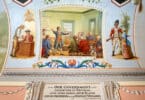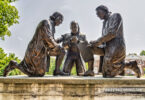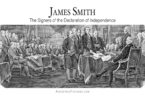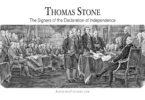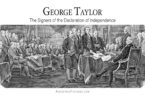Matthew Thornton was born in Ireland in 1714. Matthew’s parents were James Thornton and Elizabeth Jenkins. James was living on a farm within about a mile of the town of Derry in 1689 at the time of the Siege of Derry. It is believed by most biographers of Matthew that he was probably born there, though Lisburn and Limerick have also been put forward as possible birthplaces for him. Either way, Matthew immigrated with his family to the American colonies in 1716, when Matthew was two years old.
The Thornton family settled in Wiscasset, Maine. After six years there, the town was set upon by local Native Americans in 1722. The Thornton family home was burned, along with many other homes in the town, and James and Elizabeth fled their burning home with their children, including Matthew, who was about eight years old at the time. They moved after this, to Worcester, Massachusetts. This was a town of Scots-Irish people, which the Thorntons also were, and so they felt at home there, among their people.

Matthew grew up in Worcester, being given a classical education at Worcester Academy. After graduating, Matthew studied medicine at Leicester. After completing his medical studies, Matthew became a physician and set up his own medical practice in Londonderry, New Hampshire. In 1745, Matthew was appointed as a surgeon for the New Hampshire Militia troops in their expedition against Fortress Louisbourg that year. Later, Matthew took on some local political responsibilities when he served in the New Hampshire Provincial Assembly from 1758 to 1762. Matthew was also granted a royal commission as a justice of the peace and also served as a Colonel in the New Hampshire militia from 1775 to 1779.
When he was forty-six years old, in 1760, Matthew married. The chosen bride was Hannah Jack. Together, Matthew and Hannah had five children. Hannah crossed to the other side in 1786. By all accounts, it seemed to be a successful and happy marriage.
After marrying, Matthew was elected as a selectman in Londonderry. In addition, he was elected as a representative to and later president of the Provincial Assembly, and he was also a member of the New Hampshire colony’s Committee of Safety. While on this committee, Matthew was the one who was responsible for drafting the New Hampshire plan of government after the dissolution of the royal government of Great Britain. This plan became the first state constitution that New Hampshire adopted after the American Revolution.
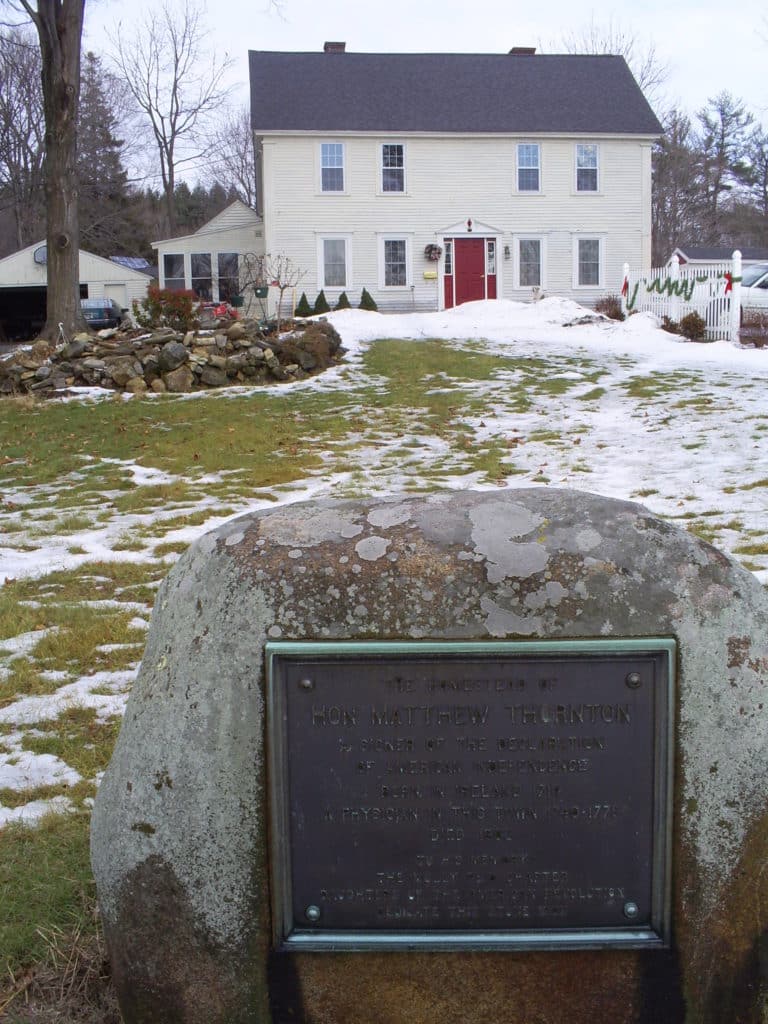
When Great Britain imposed the Stamp Act on the American colonies in 1765, Matthew was prominent in activities the colonists took against it. In spite of this, Matthew was still later awarded a commission as a Colonel of the militia under Royal Governor Wentworth. In 1775, Matthew publicly denounced the “unconstitutional and tyrannical Acts of the British Parliament.” As a result of this denouncement, Matthew was elected president of the New Hampshire Provincial Congress after Royal Governor Wentworth was driven out of the colony and got on board a British warship in Portsmouth.
After taking this office, Matthew issued a statement to the citizens of New Hampshire. Part of what this statement said, in Matthew’s own words, is:
“Friends and brethren, you must all be sensible that the affairs of America have, at length, come to a very affecting and alarming crisis. The horrors and distresses of a civil war, which, till of late, we only had in contemplation, we now find ourselves obliged to realize. Painful beyond expression, have been those scenes of blood and devastation which the barbarous cruelty of British troops have placed before our eyes. Duty to God, to ourselves, to posterity, ends forced by the cries of slaughtered innocents, have urged us to take up arms in our own defence… we seriously and earnestly recommend the practice of that pure and undefiled religion, which embalmed the memory of our pious ancestors, as that alone upon which we can build a solid hope and confidence in the Divine protection and favour, without whose blessing all the measures of safety we have, or can propose, will end in our shame and disappointment.”
Matthew served in this position as president of the New Hampshire Provincial Congress in 1775. During most of 1776, Matthew was serving as the Speaker of the New Hampshire House of Representatives. While serving there, Matthew was appointed to the Continental Congress in Philadelphia. His appointment came after the debate on independence had been settled, and the Declaration of Independence adopted. Matthew arrived at the Congress in November of 1776, and signed the Declaration, several months after the official signing in July, one of six signers who were not actually present at the Congress when the Declaration was adopted.
After serving on the Continental Congress, Matthew became a political analyst, and retired from his medical practice, having become enamored of politics. In 1780, he moved with his family to Merrimack, New Hampshire. There, he took up farming and operated Thornton’s Ferry with his wife and children. Additionally, Matthew served as a judge on the New Hampshire Superior Court from 1776 to 1782.
Other political positions Matthew occupied after serving on the Continental Congress were as a representative for Merrimack and Bedford, New Hampshire in the New Hampshire House of Representatives in 1783, and as a representative from Hillsborough County, New Hampshire in the New Hampshire Senate from 1784 to 1787. At the same time that he was serving as a state senator, Matthew also served as a State Councilor from 1785 to 1786 and was a state representative again from Merrimack in 1786.
A healthy, hearty man, Matthew lived to the venerable age of eighty-nine years old, crossing over to the other side in 1803 while visiting his daughter in Newburyport, Massachusetts. Matthew was buried in the Thornton Cemetery in Merrimack, New Hampshire, where a monument erected in his honor reads, “The Honest Man.” The town of Thornton, New Hampshire is named after Matthew. There is an elementary school in Londonderry, New Hampshire that is named after him, as well as the Thorntons Ferry School in Merrimack, New Hampshire. Matthew’s house in Derry, New Hampshire, which was a part of Londonderry when he lived in it, is listed on the National Register of Historic Places.

